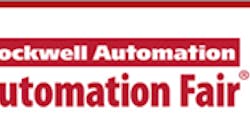The integrity of process manufacturing begins with accurate and reliable data from the field. Without it, plant operators and engineers can’t see what’s going on in their processes.
"The aim is to achieve an essential view, so our customers can perform better and operate more safely,” Matthias Altendorf, CEO of process instrumentation leader Endress+Hauser Group said. "Sometimes we have a good view, and sometimes good views begin to fade.”
Either way, there’s plenty of room for improvement in Altendorf’s view. For example, 20 years ago, 95% of service calls were reactive in response to something that had already gone wrong.
“Today, that number is still 70%,” he said. To make matters worse, “only 5% of process devices are integrated into some kind of asset management system, which means most users still don't know what's going on with their instruments.”
From field to business
Today, sensor information needs to travel further than to the control system or maintenance shop, Altendorf contended, and business requirements and opportunities are driving that data up into the enterprise.
“Only 5% of process devices are integrated into some kind of asset management system, which means most users still don't know what's going on with their instruments.” Matthias Altendorf of Endress+Hauser decried the underutilized data trapped in industry’s enormous installed base of smart instruments.
Indeed, sensor-to-enterprise data integration can deliver key complementary information about locations, conditions, status and services, Altendorf said. Next, these solutions can incorporate useful data from external sources, such as inventory, transportation and logistics, weather conditions, applicable legislation, and even upper-level information from the enterprise itself, such as business, relationship, social, financial and quality histories. Finally, all of these sources can be coordinated and used to fuel a variety of data analytics for better decision-making and improved productivity.
"For example, one of the world's biggest chemical plants was motivated to improve its energy management for better performance and savings, so they collected all their available field-, application- and operations-level data, much of it from E+H devices, and then used SAP software to integrate it with their business processes," said Altendorf. "Likewise, a container-shipping firm with more than 100 vessels solved its fuel bunkering and consumption challenges with a ‘Purchase to Propeller’ program. More accurate data about fuel delivery and consumption from our Coriolis and other flowmeters is now delivered in real-time to every ship via satellite."
Altendorf added that virtualized and secure cloud-based computing makes these formerly big-ticket capabilities more usable for medium and smaller companies and users.
"One plant in Vietnam prevents overfill events with servo gauging, point-level switches and other components, and now can do automatic proof testing," he explained. "On the pH measurement side, while E+H has developed contact-less connections for inductive data transmission so calibration in the field isn't needed, we found that applying better analytics to one plant's pH probes helped save $300,000 per year and increased productivity by $3.5 million per year."
In general, Altendorf added that EthnerNet/IP network communications protocol used by E+H and Rockwell Automation can reduce commissioning time by 40%, as well as save 25% on implementing control functions.
"Safety, security and reduced I/O cost are givens for EtherNet/IP," said Altendorf. "This is important because The Connected Enterprise can make a huge difference in so many process applications.
“Some estimates show that a lack of enterprise connectivity costs the U.S. economy $700 billion annually,” Altendorf said. “E+H has 30 million installed devices, each with three to 10 data sets. This data could be the source of big business improvements—but only a fraction of customers currently access them. We have to coordinate these suppliers and customers to secure more value, do business better, so we can all still be in business 100 years from now."








